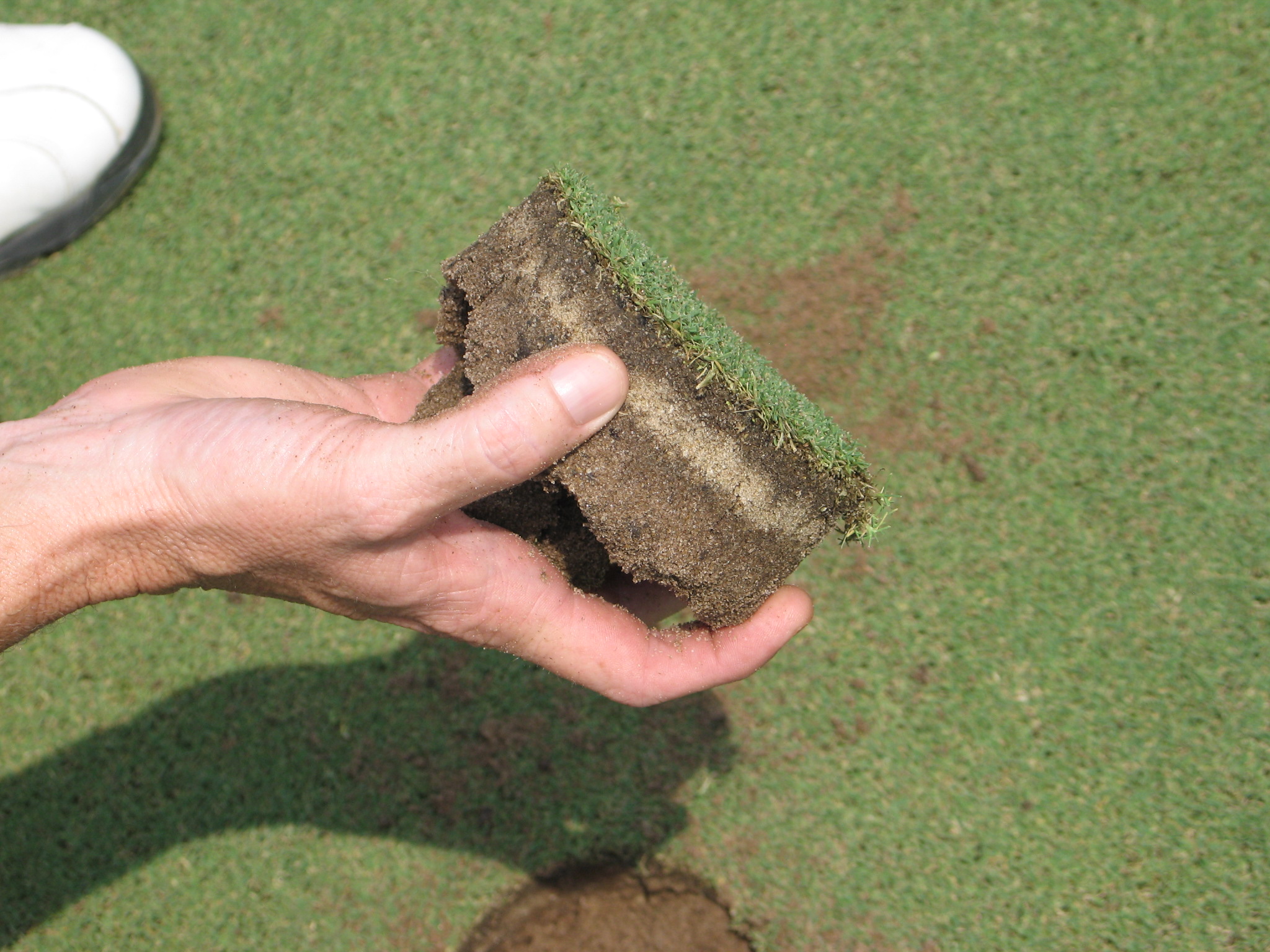Managing Thatch Accumulation on Golf Courses
Thatch management represents a major expense and challenge for golf course managers, particularly on golf greens. Thatch is a layer of organic matter, including tightly intermingled dead and living leaves, stems, and roots that develop between the soil surface and the green vegetation. Currently, thatch accumulation on golf greens is managed using cultural practices that physically remove thatch and dilute thatch levels by topdressing with sand. Cultural practices such as core aeration, vertical mowing, and topdressing are labor and cost intensive and have disruptive effects on turfgrass surfaces and quality. Many of these industry standard practices involve shutting down the greens for treatment and recovery, making them unavailable to golfers and reducing green fee revenues during and following treatment. Research by UGA crop and soil scientists has verified that periodically spraying an enzyme solution on the surface of the greens can enhance the rate of degradation of organic matter and limit thatch accumulation without impacting turf quality. This research indicates that this approach reduces the need for disruptive cultural management practices currently used on golf greens. If 25 percent of all golf courses adopted the enzymatic dethatching method and it eliminated two core aerations a year, this accrues to a direct market value of $90 million in the U.S. and $155 million worldwide. If the recovery of lost revenues associated with disrupted play due to core aeration is considered, the potential economic impact is over $1 billion annually worldwide.
Read the full impact statement
Related Impact for Urban Agriculture
- Cost-saving lighting strategies for greenhouses 2020
- Dieback on Red Maples 2020
- Green Thumb Lectures 2020
- Microbial Hazards in Food Distribution Centers 2020
- New Abelia for the Landscape 2020
- Pollinators in Peril 2020
- Riverwood Pollinator Garden 2020
- Turfgrass Diffusion of Innovation 2020
- Vegetable Garden Pest Management 2020
- Weed Control Options 2020

